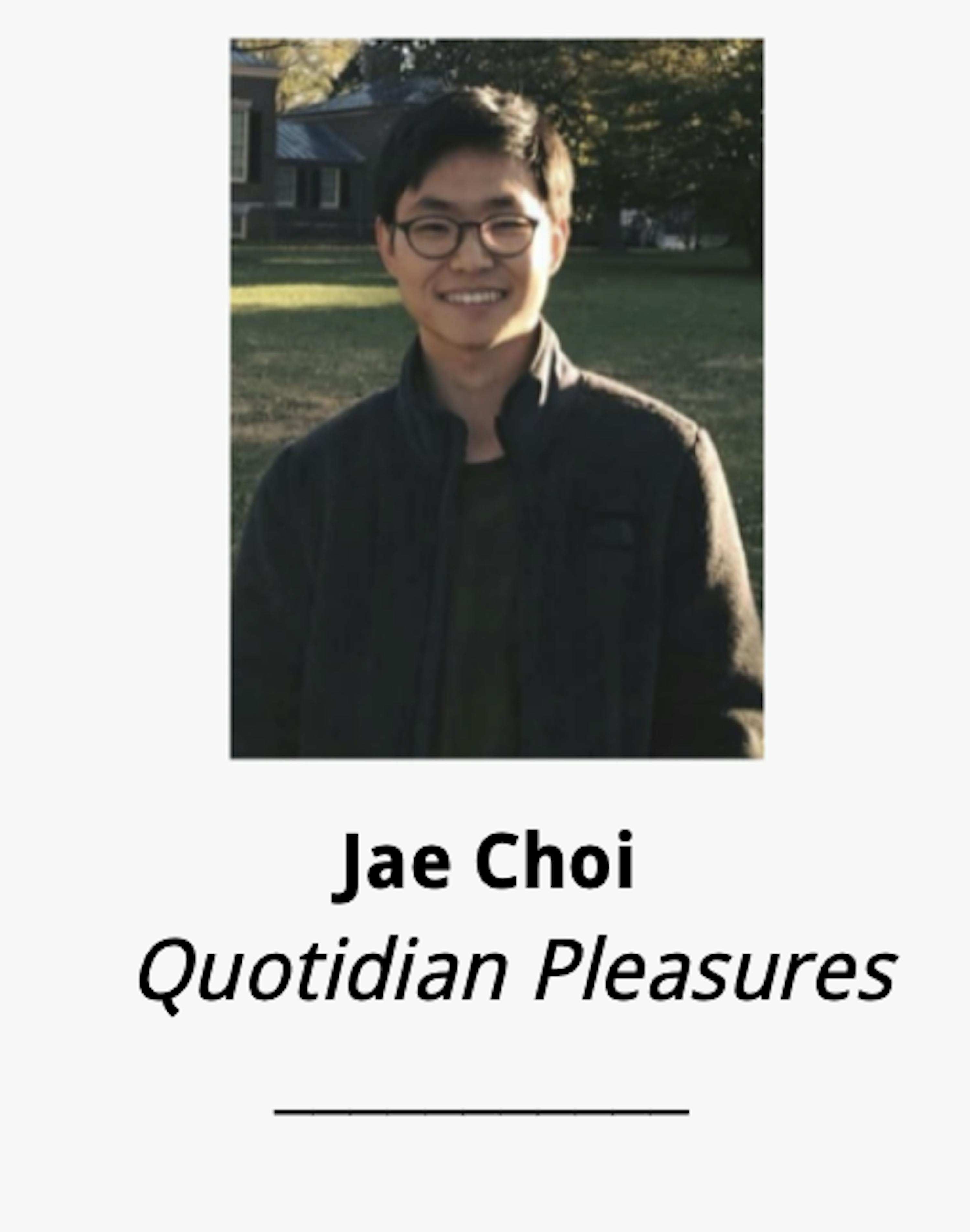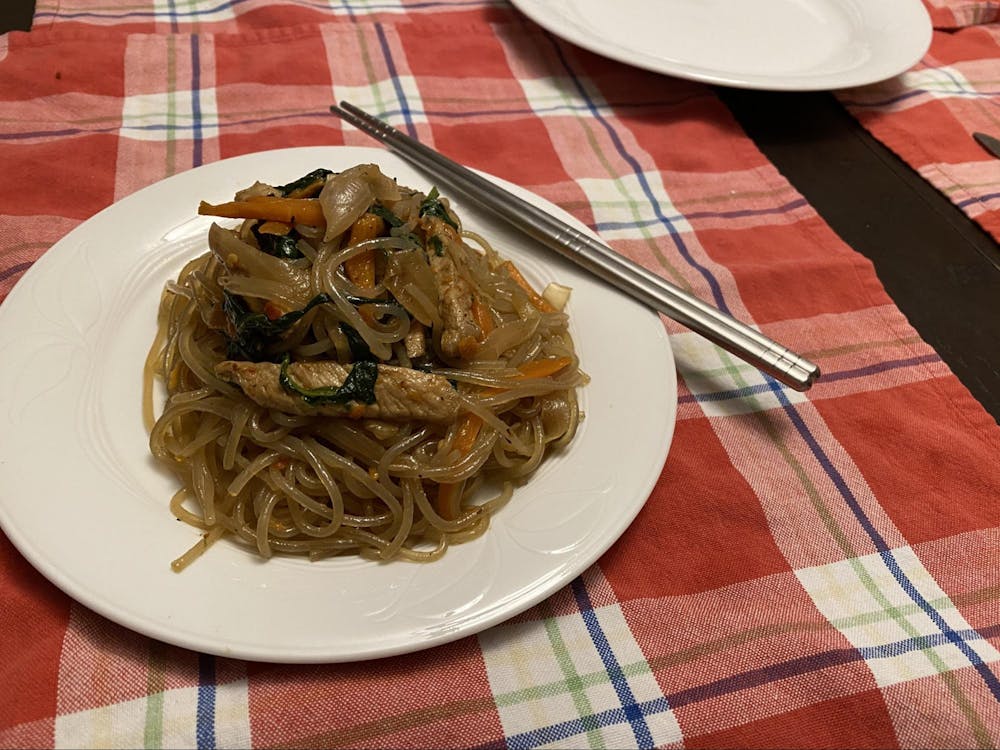
In celebration of Lunar New Year, I helped one of my roommates prepare a hotpot dinner. When the pot began to boil, a rich aroma filled every crevice of the apartment. Fish balls and chunks of tofu, glistening with crimson streaks of fat, bobbed up and down in the beef tallow soup base. After allowing the soup to boil for a few minutes, we added beef and pork slices to the broth and waited.
When the meat was done cooking, I could see tiny balls of Szechuan peppercorn hiding among the pieces of meat, tofu, cabbage and king oyster mushroom I had fished out onto my plate. The inclusion of the peppercorn augmented the spiciness of the broth with a numbing sensation, producing a unique flavor known as málà. The peppercorn is meant to release you from the pain brought by the other, more conventionally spicy peppers in the broth; málà is, as one BBC writer described it, “cathartic.”
By sharing this meal with me, my roommate was also sharing a part of himself; among other things, he divulged facts about where some of the peppers were from, how certain regions prepare the soup base and what hotpot means as a cultural gesture. Somehow the occasion prompted me to recall some childhood experiences sharing my own food culture, experiences I thought I’d forgotten.
The greatest culture shock I experienced when moving to Texas had to do with how nobody wanted to share food with each other. In the other places where I’d lived, kids were eager to trade seaweed lavers for kebabs, kimchi for crackers, rice for bread. It only now strikes me that back in Texas, it wasn’t that other kids didn’t want to share food in general. It was that they didn’t want to share food with me.
I laugh to myself, unsure of why I’d never considered that connection before. Didn’t I remember all those times that people complained about the smell coming from my fried bean curds or made weird faces at my kalbi short-ribs? I don’t clearly remember how I felt in these moments, but as one of the only Asian people at school, I’m sure it must have been lonely and embarrassing.
As a result, I don’t think it’s coincidental that I rarely, if ever, cook or eat Korean food. I do like making food from the American south; gumbo and jambalaya rice are among my favorite dishes to make. I also like preparing Italian food, and occasionally I try my hand at Japanese dishes based on whatever recipes I learned while living there. But I rarely cook Korean food. And I only eat it when my friends offer me some.
I wouldn’t say that I’m ashamed of the cuisine of my heritage or that I don’t feel like I’m capable of cooking it. My food culture is simply something I had never openly embraced. I think there perhaps might be a subconscious fear that cooking Korean food or sharing it with others would invite another one of those “lunchbox moments” to which I’d grown much too accustomed in primary and secondary school.
While re-encountering these early experiences, I realized that my (un?)intentional forgetting of these lunchbox moments was a numbing salve that protected me from feeling embarrassed about where I was from. It was the application of Szechuan peppercorn to my memory. It was why I felt relieved when mom didn’t pack kimchi for lunch. It was why I often preferred food from the lunch line — cheeseburgers and slices of pizza drenched in ranch and tangerine-colored grease — to bibimbap.
But this process of forgetting wasn’t a cathartic device, at least not in the way that Szechuan peppercorn released you from physical pain on your tongue. For that to be true, I would have had to liberate strong emotions rather than repressing them. My willed forgetting was the mechanism of a different spice; the Szechuan peppercorn had yet to come.
The next weekend, I’m pulling out some dried glass starch noodles from our shared pantry. One of my other roommates has a birthday coming up; I want to prepare him a traditional Korean dish called “japchae.” As I boil the noodles, I prep thin slices of pork loin and begin cooking them in a large pan at high heat. Once the slices of meat begin to lose their pink, I add slivers of carrot, onion and shiitake mushroom until the onions caramelize and hiss. I toss in a handful of spinach.
A few minutes pass. The leaves have shrunk by now and have taken on a dark green hue. I allow the contents of the pan to rest on a dish while I attend to the noodles, which are now about done. I toss the noodles into a large mixing bowl, sequentially adding minced garlic, sugar, soy sauce and sesame oil. I add in the vegetables from the dish and stir.
From the mixing bowl rises a familiar aroma, like a good friend that I haven’t talked to in a long time. Looking back into the past, I recall times I had helped my mom make japchae in our kitchen at home. Looking towards the near future, I feel a mix of excitement and apprehension as I prepare to share not just my food but a part of myself.
My roommate loved it.
Jae Choi is a senior from Carrollton, Texas studying Neuroscience and English. He is an aspiring MD candidate. In his column, he enjoys making sense of extended stays at home during the pandemic and exploring how to find significance in everyday activities.





